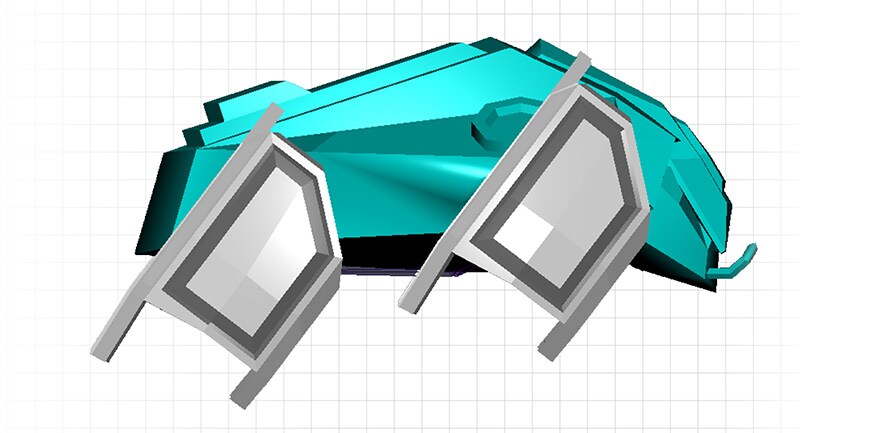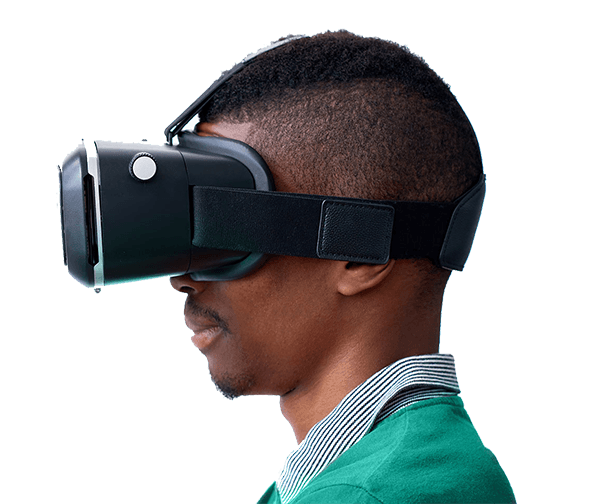Worldwide Sites
You have been detected as being from . Where applicable, you can see country-specific product information, offers, and pricing.
Keyboard ALT + g to toggle grid overlay
Q: Tell me about CAT Interstellar.
A: You play as a D.O.G. V4 drone, a maintenance bot on Mars. The humans are trying to terraform Mars so that people can live there. Your mission is to find samples of life, but you end up finding a complicated past as you go deeper into the caves of Mars.

Q: You’re a one-man operation, so how were you able to continue to develop your game idea through to fruition?
A: To be clear, I also work with a writer, but all the development is mine. It all started at Epic’s monthly game jam. Out of the blue, this idea came to me that if a virtual shape is in the right locations, you can change the opacity value to one and it looks like you have a flash light. So when you flash over something specific, it’ll uncover it. That’s the idea the game was born from, and from there, it just kept evolving. I grew up on a lot of old science fiction stories like Robert Heinlein’s works, and those stories always had some kind of connection to a social problem. For me, that was a positive aspect of sci-fi: you could take a world that people are uncomfortable with and present it in a different light. We wanted to do that with CAT Interstellar.
Q: Your journey is different than most. How did you get involved with game development?
A: I was in the army before school. I’ll never forget, we were in a remote place in Iraq and everything had to be air dropped or flown in by helicopter. They had something called a PX--post exchange--where you can buy things like toilet paper. It was so difficult to get little items like Q-tips, but on the day that Halo 2 was released, they had an entire setup in this little PX where you can buy the game. I couldn’t believe it! It was easier to buy Halo 2 than Q-tips.
I went to school after the Army, and towards the end of my degree in Physics I became really interested in visualization. The physics professors would talk about these weird things like stars turning into black holes, and I became obsessed with being able to visualize these sorts of things. I got into modelling and computer graphics, and then focused my degree on that. People thought I was little crazy. I stopped taking physics classes and started taking graphic design classes. It kind of worked out for me, but I don’t really know what drove me to start my own thing. It just seemed like the logical next step.
Q: VR can be challenging because of players’ concerns about full immersion and nausea. How do you get around that?
A: In a lot of VR games, you’re playing a person, and that can get into the player’s head. Knowing you’re inside of a robot actually helps players keep a sense of direction in the game. The other thing I did was introduce players into the game in 2D. The main menu starts in 2D. Whatever hardware you’re using, you’ll open the game in 2D and then you can activate it in VR. It seemed to help people get immersed in the game instead of just ‘BAM! You’re in it!’

Q: How did you create all the assets on a one-man team?
A: I use Maya LT for making adjustments to models, reducing the triangle count or redoing the UVs. It’s easier to buy an asset to get the general shape and then retexture it inside of Unreal. It’s just so easy to rip everything else out, redo the UVs and put it in the game. Once I have that, and once I make the adjustments in Maya LT, I would pout it over to the Unreal Engine and rewrite all the shaders.
Q: So nothing’s built from the ground up?
A: D.O.G., the main character is built from scratch. But aside from that, all assets have been manipulated or changed from a bought one. For instance, I bought a whole sci-fi pack, but I just needed the monitor so we went in and just ripped everything else out and kept the parts we need.
Q: Other than Maya, what tools or techniques are essential to your unique style of game development?
A: The things that game engines can do really fascinate me. When I first got started, I was messing around with Unity and the old Unreal Engine and something about the Blueprints made it very easy to show things visually. I was reconstructing real-world terrain with satellite images like digital elevation models. Now I use it to create the model accurately and ‘drop’ someone into it. Name your place on earth, and we can instantly generate it and walk around in it.
Q: Interesting. That really fits into the whole point of VR. You’re transporting someone to other places.
A: Exactly. It’s real-life immersion.
Q: It’s great that we get to talk to lots of different game designers who have many different ways of building games. Thank you for taking the time to share your story with our readers.
A: No problem.
